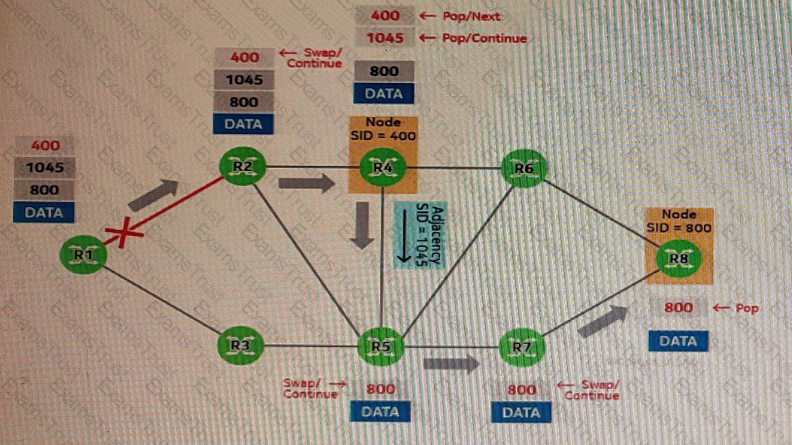OSPF is being used for segment routing with traffic-engineering (SR-TE). The traffic-engineering option has been set to "sr-te false". Which of the following statements is TRUE?
Which of the following list of SR-TE attributes has to be advertised among routers?
Which of the following is NOT an advantage of using a PCE for the computation of TE-constrained LSP paths, as compared to using CSPF locally on the PE router?
Based on the exhibit, which of the following statements about fast re-route for flex-algo instance 129 is TRUE?

The exhibit presents packets being transmitted inside an LSP's multi-segment primary path going from router R1 to router R8. The LSP also has a standby secondary path, and Seamless-BFD has been enabled on the primary path. The link between routers R1 and R2 fails, and fast re-route (FRR) is triggered. As a result, router R1 forwards the packets to router R3 and adds the proper FRR encapsulation to reach which router?

Which of the following statements about a Segment Routing SID is FALSE?